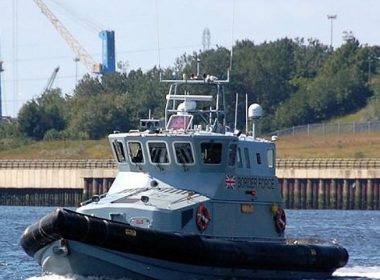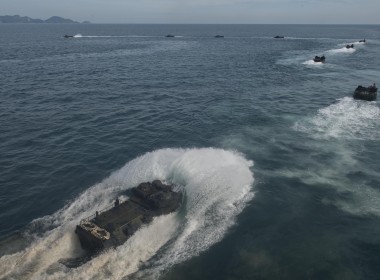Offensive USVs enable Ukraine’s new maritime strategy

The Ukrainian Navy’s order of battle consists of a small number minor war vessels, but the extensive use of warhead-fitted unmanned surface vehicles (USVs) has greatly enhanced the heft of the service, and enabled Kyiv to shift to a new maritime strategy.
USV attacks now a major threat to Russia’s fleet
Early August saw Ukraine execute its most successful USV attack on Russian naval assets to date when the Russian Navy landing ship Olegorsky Gornyak as well as the commercial oil tanker Sig suffered significant damage from night attacks by indigenously-constructed Magura USVs against Novorossiysk naval base on Russia’s Black Sea coast. The landing ship had been deployed to support Russian Army units fighting in Ukraine while the tanker was reportedly engaged in transporting fuel to Syria to be used by Russian warships operating from Tartus naval base north of Damascus.
The Russians were seemingly unprepared for such an attack. The stricken ships made easy targets as they were showing lights, as well as being silhouetted against shoreline illumination. The vessels apparently put up no resistance.
The new Ukrainian strategy is intended both to hamper Russian military operations on land and to damage the country’s economy, with emphasis being placed upon hindering Russia’s highly lucrative oil exports to China and India. The Ukrainian Navy Hydrographic Office has put out a Notice to Mariners warning all shipping to stay clear of Russia’s Black Sea.
Is the end in sight for surface warships?
Some naval commentators are asserting that the rising profile of offensive USV operations presages a revolution in sea warfare, and so they question the value of conventional surface warships. Unmanned vessel operations are not new, though, as fire ships and gunpowder-laden explosive vessels were extensively used in the days of fighting sail in order to infiltrate and damage hostile fleets.
USVs have some drawbacks, too. They are weather-limited and easily detectable by basic electro-optical observation and radar devices. They can also become easily damaged by defensive fire. Concentrated machine gun fire from the Russian frigate Admiral Makarov successfully beat off a USV attack in October 2022. Also, small helicopter-launched guided missiles such as the Sea Venom, intended to be fired in salvos against multiple small targets, are under development, as are dedicated electronic countermeasures. Furthermore, numbers of deck-mounted machine guns and cannon fitted to surface warships are likely to multiply.
There is little doubt that the proliferation of attack USVs will continue as they can provide considerable clout for otherwise insignificant navies at relatively low cost. However, we are unlikely to see the demise of surface warships any time soon.








